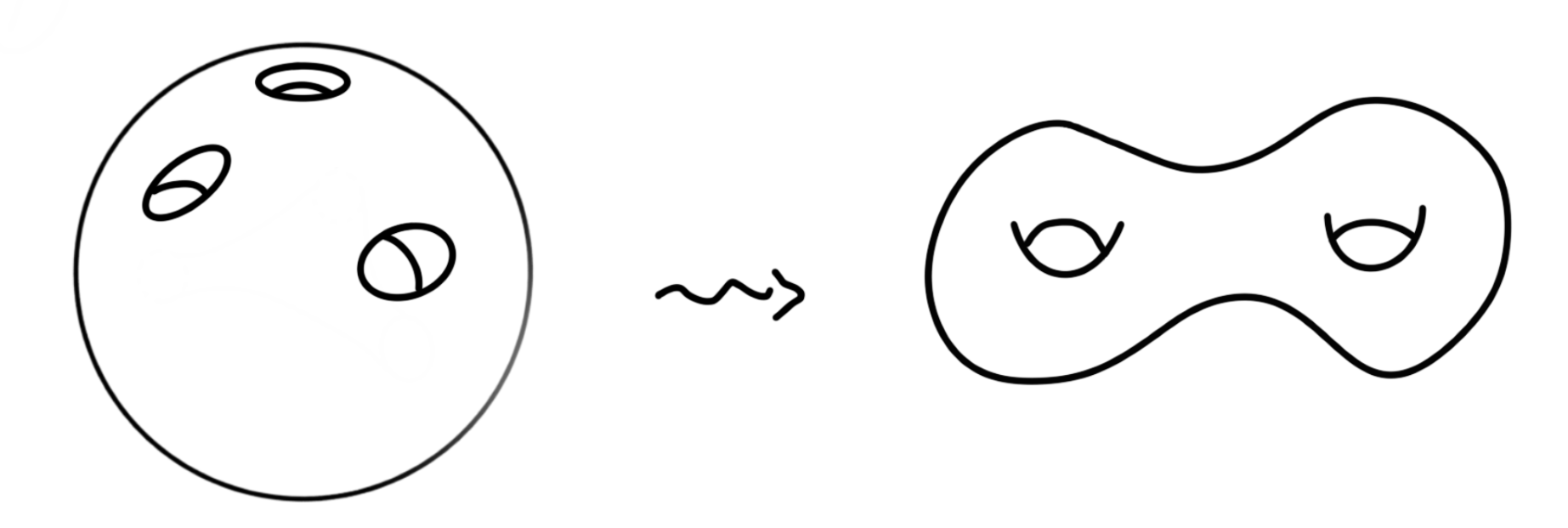Problems
Show that \(x \oplus y = 0\) if and only if \(x = y\). Remember that \(x \oplus y\) denotes the nim-sum of \(x\) and \(y\).
Show that \(\text{Nim}(x,y,z)\) is a losing position if and only if \(x \oplus y \oplus z = 0\). Remember that \(x \oplus y\) denotes the nim-sum of \(x\) and \(y\).
Is \(\text{Nim}(7,11,15)\) a winning position or a losing position? If it is a winning position, what is the optimal move?
Show that \(\text{Nim}(x_1,\dots,x_k)\) is an losing position if and only if \(x_1 \oplus \dots \oplus x_k = 0\). \(x \oplus y\) denotes the nim-sum of \(x\) and \(y\).
Imagine the Earth is a perfectly round solid ball. Let us drill from the North Pole, London and Beijing simultaneously and meet at the centre of Earth. A ball with three openings is formed. The surface of this ball is shown on the left of the picture below. Describe how to stretch this surface so that it looks like the surface of a donut with two holes as shown on the right.

The pigeonhole principle is often called “Dirichlet’s box principle". Dirichlet made good use of this tool to show a fundamental result in Diophantine approximation, now commonly known as the Dirichlet Approximation Theorem. You will now prove it yourself!
Suppose \(\alpha\) is any irrational real number and \(N\geq 1\) is any positive integer. Show that there is an integer \(1\leq q\leq N\) and an integer \(p\) such that \[\left| q \alpha - p \right| < \frac{1}{N}.\]
Does there exist an irreducible tiling with \(1\times2\) rectangles of a \(6\times 6\) rectangle?
Irreducibly tile a floor with \(1\times2\) tiles in a room that is a \(6\times8\) rectangle.
Let \(m\) and \(n\) be positive integers. What positive integers can be written as \(m+n+\gcd(m,n)+\text{lcm}(m,n)\), for some \(m\) and \(n\)?
Suppose that \(n\) is a natural number and \(p\) is a prime number. How many numbers are there less than \(p^n\) that are relatively prime to \(p^n\)?